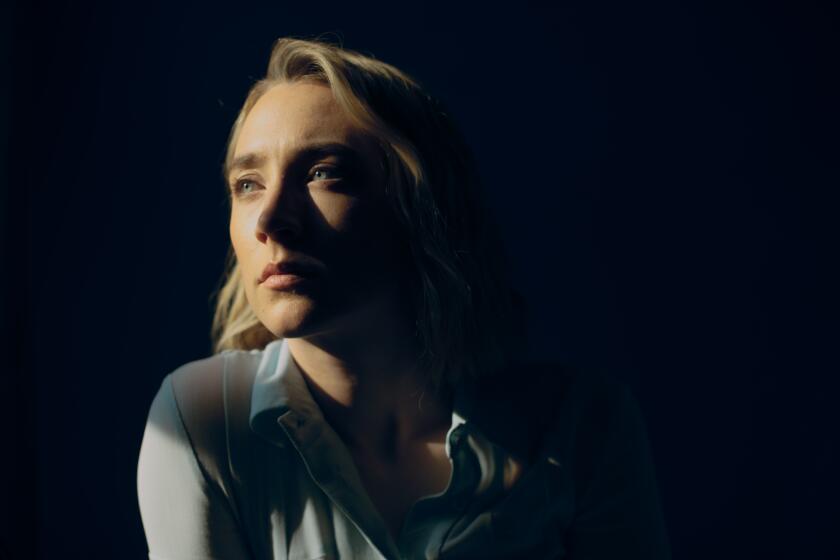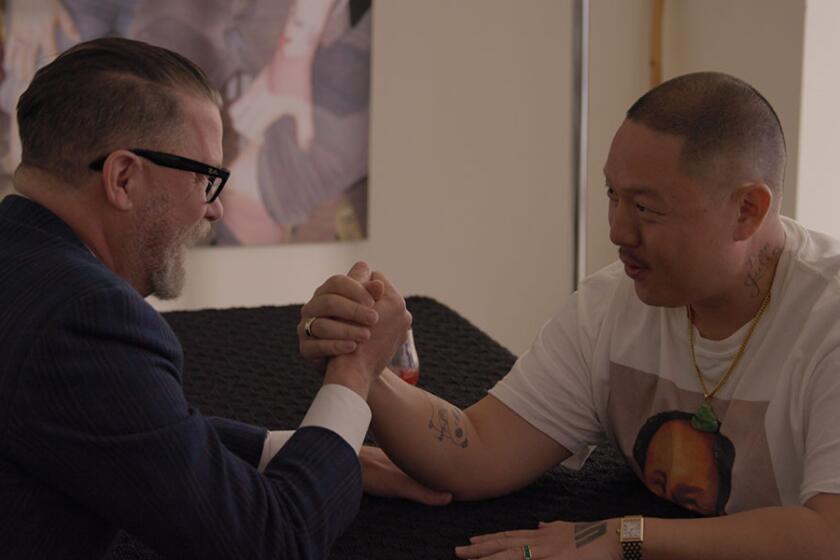Review: ‘Temple Grandin’ on HBO
At first glance, it might appear that Claire Danes and HBO are a little behind the curve with “Temple Grandin,” a biopic about an early autistic advocate and educator. In the years since “Rain Man,” autism has created something of a stock character in television and film. Indeed, when Danes was preparing for the role of Grandin, she had to look no further than her husband, Hugh Dancy, who recently starred in “Adam.”
But you can’t be behind the curve when there is no curve, and there is no longer any curve on autism movies because Danes and the makers of “Temple Grandin” have blown it out of the water.
Utterly and gorgeously unsentimental, “Temple Grandin,” arriving Saturday, clomps across the screen with all the wild-eyed grace of its main character, chronicling the life of a woman who not only overcame a host of physical, mental and social obstacles but actually used her autism to create a career for herself in animal husbandry. She is best known for designing a more humane method of herding cattle to the slaughterhouse.
Here we must take a moment to tip our hats to HBO; it’s difficult to imagine another group of people that would greenlight a film in which the main character’s moment of triumph involves the term “slaughterhouse.”
The real-life Grandin has written and lectured extensively on what it means to be autistic, helping countless people cope with the condition, and that is what less brave writers (Christopher Monger and William Merritt Johnson have teleplay credit here) and producers would have gone with.
But what she’s also famous for, and what the narrative of “Temple Grandin” follows, is her work in the cattle industry, where she used her unique view of the world to figure out how to move cattle more humanely and efficiently.
I don’t know what PETA will have say, but I wanted to stand up and cheer. From the moment Danes appears on camera, all angular lanky gait and wide eyes, “Temple Grandin” is a movie you can believe in.
With breathtaking matter-of-factness, we meet Temple as she is visiting her Aunt Anne (Catherine O’Hara) on her ranch in East Texas. “She seems fine,” Anne tells Temple’s mother, Eustacia (Julia Ormond), over the phone. Eustacia sighs: “You know it’s just a matter of time before something sets her off.”
That’s true, of course, but Temple’s breakdowns do not cause shock, anger or sorrow so much as a desire among plain-spoken people to help this young woman control herself.
Through flashbacks we see the evolution of this no-nonsense approach. When Temple is diagnosed, the doctor recommends institutionalizing her, something her mother will not accept. Instead she spends years figuring out a way into Temple’s world so she can give Temple the tools to navigate ours. (Her attitude is especially remarkable considering that Temple was born in 1947, when autism was not even part of the social conversation.)
A teacher (David Stra- thairn) at a progressive boarding school helps, realizing that Temple literally thinks in pictures. Armed with the knowledge that this isn’t how most people think, Temple is able to make some sense of how she differs from others and use her perspective to do things others can’t.
That includes understanding animals, whose reactions and moods seem to mirror her own -- in one breakthrough moment, Temple is able to regain emotional control by putting herself into a contraption the cowboys on her aunt’s ranch use to calm cattle before inoculation.
As she begs her aunt to close the iron bars, we glimpse the extraordinary courage of the Grandin family. Although Anne (whom O’Hara plays to Emmy-winner perfection) is clearly horrified and heartbroken to see her niece confined like an animal, she realizes that extreme situations call for extreme measures and does what Temple asks.
Eventually Temple builds her own squeeze machine, which becomes a symbol not only of the basic contradiction of autism -- she wants to be held but cannot bear it -- but of what society will bear. Smoking, drinking, fighting are all sanctioned forms of self-soothing; putting yourself in what looks like a doghouse is not.
Until, that is, you conduct a study proving that confinement has a calming effect on many people. Buoyed by her mother’s confidence and expectation -- “Different, not less” -- Temple repeatedly employs her understanding of science and engineering to prove that what she experiences is not so different, just a little more extreme.
At every turn, Danes and the filmmakers defy convention and expectation, creating not only a true homage to a unique woman but a cinematic reminder of the way these things should be done.
mary.mcnamara @latimes.com
More to Read
Only good movies
Get the Indie Focus newsletter, Mark Olsen's weekly guide to the world of cinema.
You may occasionally receive promotional content from the Los Angeles Times.











